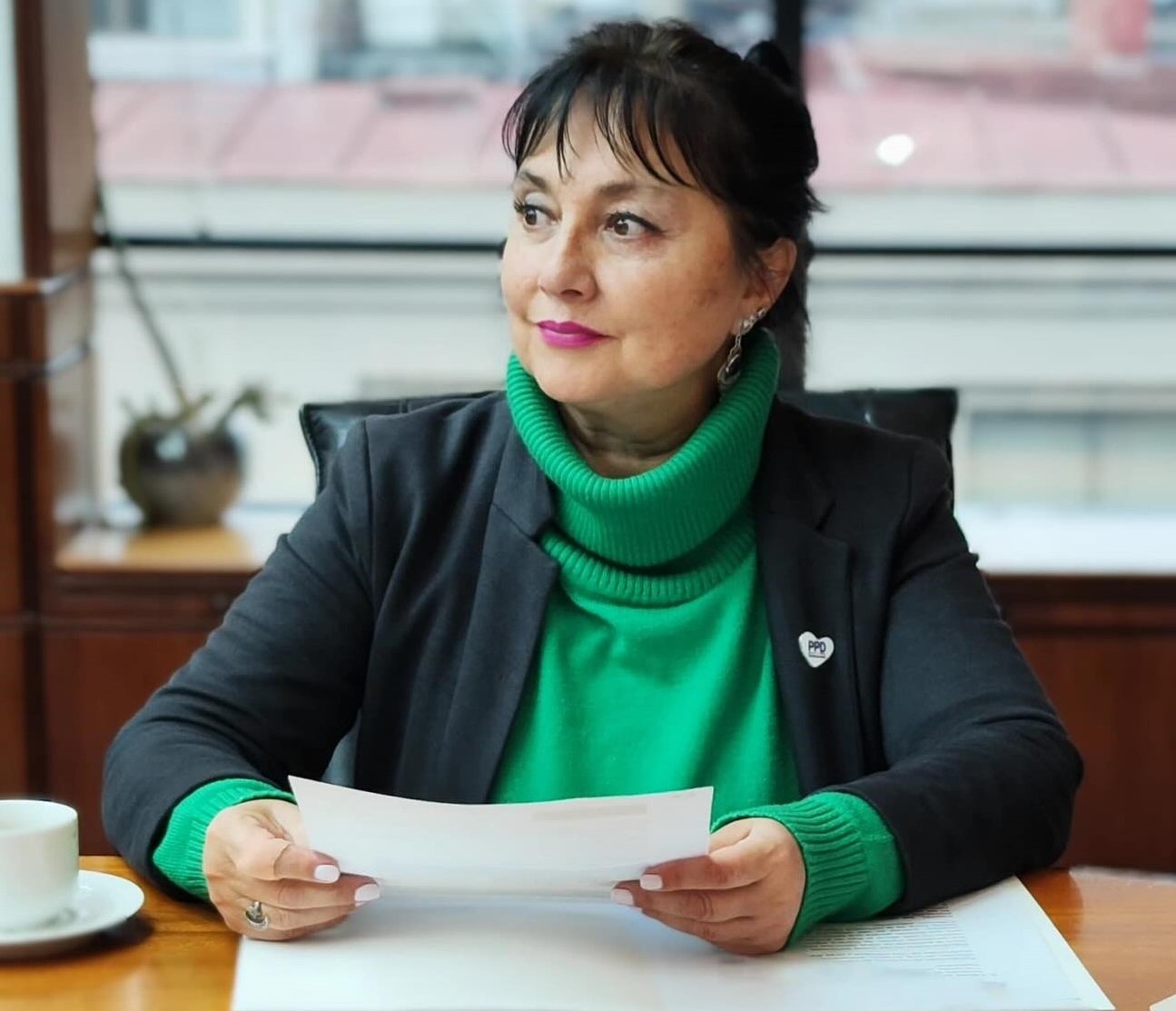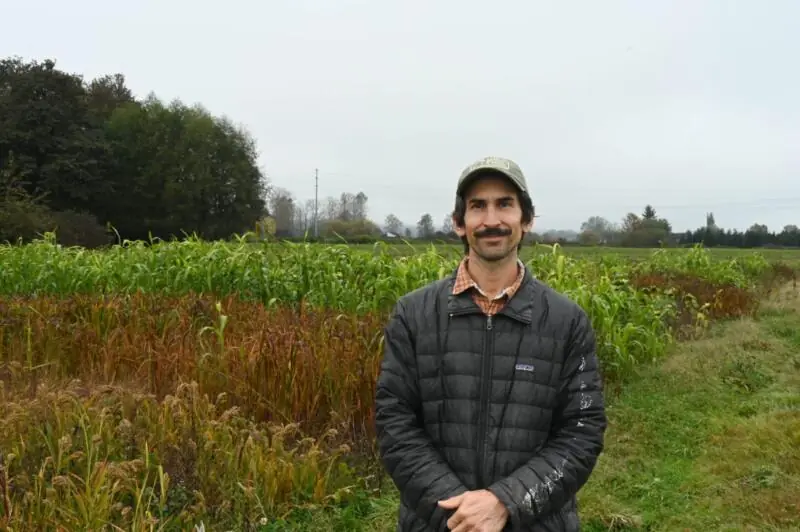Protected Areas Day: Deputy Marzán Advocates for Greater Transparency and Community Engagement in Conservation Efforts – elciudadano.com

Report on Legislative Deliberations for Biodiversity Protection in Chile and Alignment with Sustainable Development Goals
Introduction: Advancing Biodiversity Conservation through Law 21.600
In a session of the Agriculture Committee, Deputy Carolina Marzán addressed the implementation of Law 21.600, which establishes the Biodiversity and Protected Areas Service (SBAP). The discussion centered on the designation of priority conservation sites, a process critical to achieving several Sustainable Development Goals (SDGs). Deputy Marzán advocated for a process grounded in transparency, robust community participation, and a commitment to the common good, aligning national policy with global sustainability targets.
Integrating Environmental Protection and Equitable Development
The Deputy underscored the need to balance environmental preservation with regional economic activities, a core tenet of the 2030 Agenda for Sustainable Development. This approach directly supports:
- SDG 15 (Life on Land): By calling for the protection of irreplaceable natural assets such as water sources, soil, and forests.
- SDG 14 (Life Below Water): Through the inclusion of marine ecosystems in conservation strategies.
- SDG 8 (Decent Work and Economic Growth): By ensuring that conservation efforts safeguard and promote sustainable livelihoods, including agriculture, artisanal fishing, and rural tourism.
The debate on priority sites is framed as an opportunity to create a national framework that protects biodiversity while fostering equitable and sustainable development for all communities.
Strengthening Governance through Inclusive Participation and Transparency
A central theme of the intervention was the critical importance of strong, transparent, and inclusive institutions, reflecting the principles of SDG 16 (Peace, Justice and Strong Institutions) and SDG 17 (Partnerships for the Goals).
The Role of Multi-Stakeholder Engagement
The Ministry of Environment’s decision to extend deadlines for the designation process was highlighted as a vital opportunity to enhance participatory decision-making. Effective implementation requires incorporating knowledge and perspectives from a diverse range of stakeholders, including:
- Local community members
- Artisanal fishermen
- Academics and scientists
- Indigenous peoples
- Farmers and beekeepers
- Environmental organizations
- Rural communities
This multi-stakeholder approach is essential for building consensus and ensuring that conservation strategies are scientifically sound, locally relevant, and socially just.
Case Study: The Quirilluca Cliffs and the Call for Accountability
The exclusion of the Quirilluca Cliffs in the Valparaíso region from the preliminary list of priority sites serves as a key case study. Despite its recognized ecological value—hosting migratory birds, wetlands, and unique forest ecosystems—the site was omitted, prompting questions from local communities in Puchuncaví, Maitencillo, and Horcón. This situation underscores the public’s demand for transparent governance, a right enshrined in SDG 16. The mobilization of over 270 civil society organizations, who have formally requested a review of the process, further demonstrates a widespread commitment to holding institutions accountable and advancing SDG 11 (Sustainable Cities and Communities) by protecting natural and cultural heritage.
Recommendations for an SDG-Aligned Path Forward
To ensure the successful and equitable implementation of the Biodiversity and Protected Areas Service, the following concrete actions were proposed, each designed to reinforce Chile’s commitment to the Sustainable Development Goals:
- Ensure Total Transparency: Publicly release all technical criteria, maps of included and excluded areas (polygons), and the detailed rationale behind each designation decision. This aligns with SDG 16’s target for public access to information.
- Enforce Binding Participation: Establish and enforce mechanisms for meaningful and binding participation from all relevant stakeholders, including communities, academia, indigenous peoples, and economic sectors like agriculture and fishing, in line with SDG 17.
- Conduct Scientific Reviews of Excluded Sites: Systematically re-evaluate ecologically significant sites, such as Quirilluca, that were initially excluded. This process must be based on scientific evidence to prevent irreversible environmental damage, directly supporting SDG 15.
Analysis of Sustainable Development Goals in the Article
1. Which SDGs are addressed or connected to the issues highlighted in the article?
- SDG 6: Clean Water and Sanitation
- SDG 11: Sustainable Cities and Communities
- SDG 14: Life Below Water
- SDG 15: Life on Land
- SDG 16: Peace, Justice and Strong Institutions
- SDG 17: Partnerships for the Goals
2. What specific targets under those SDGs can be identified based on the article’s content?
-
SDG 15: Life on Land
- Target 15.1: By 2020, ensure the conservation, restoration and sustainable use of terrestrial and inland freshwater ecosystems and their services, in particular forests, wetlands, mountains and drylands, in line with obligations under international agreements.
Explanation: The article’s central theme is the discussion of “priority sites” under the Biodiversity and Protected Areas Service law. It explicitly mentions the need to preserve “water, soil, forests,” and highlights the ecological value of the Quirilluca Cliffs, which include “wetlands, relict forests, and unique ecosystems.” This directly relates to the conservation and sustainable use of terrestrial and freshwater ecosystems. - Target 15.5: Take urgent and significant action to reduce the degradation of natural habitats, halt the loss of biodiversity and, by 2020, protect and prevent the extinction of threatened species.
Explanation: The concern over the exclusion of the Quirilluca Cliffs, a site of “immense ecological value” featuring “migratory birds,” reflects the urgency to protect natural habitats and halt biodiversity loss. The call to review excluded sites before “irreversible changes occur” aligns with this target. - Target 15.9: By 2020, integrate ecosystem and biodiversity values into national and local planning, development processes, poverty reduction strategies and accounts.
Explanation: The entire debate around Law 21.600 and the “preliminary mapping of the priority sites” is an exercise in integrating biodiversity values into national and local planning. The article emphasizes the need for this process to be coherent and respectful of life, balancing nature protection with productive activities.
- Target 15.1: By 2020, ensure the conservation, restoration and sustainable use of terrestrial and inland freshwater ecosystems and their services, in particular forests, wetlands, mountains and drylands, in line with obligations under international agreements.
-
SDG 16: Peace, Justice and Strong Institutions
- Target 16.6: Develop effective, accountable and transparent institutions at all levels.
Explanation: Deputy Marzán’s first proposed action is for “total transparency: publish the technical criteria, the included and excluded polygons, and the rationale for each decision.” This is a direct call for accountable and transparent institutional processes. - Target 16.7: Ensure responsive, inclusive, participatory and representative decision-making at all levels.
Explanation: The article repeatedly stresses the need for participation. The deputy’s second proposal is to “enforce binding participation from communities, academia, indigenous peoples, the agricultural sector, and fishermen.” The extension of deadlines by the Ministry of Environment is valued as an “opportunity: to listen” to all stakeholders, which is the core of this target.
- Target 16.6: Develop effective, accountable and transparent institutions at all levels.
-
SDG 14: Life Below Water
- Target 14.2: By 2020, sustainably manage and protect marine and coastal ecosystems to avoid significant adverse impacts, including by strengthening their resilience, and take action for their restoration in order to achieve healthy and productive oceans.
Explanation: The article mentions the need to preserve the “seas” and the importance of listening to “artisanal fishermen.” The discussion of protecting coastal sites like the Quirilluca Cliffs is directly related to the protection of coastal ecosystems.
- Target 14.2: By 2020, sustainably manage and protect marine and coastal ecosystems to avoid significant adverse impacts, including by strengthening their resilience, and take action for their restoration in order to achieve healthy and productive oceans.
-
SDG 6: Clean Water and Sanitation
- Target 6.6: By 2020, protect and restore water-related ecosystems, including mountains, forests, wetlands, rivers, aquifers and lakes.
Explanation: The article explicitly states that protecting biodiversity involves “safeguarding… drinking water.” It also highlights the importance of protecting “wetlands” in the Quirilluca Cliffs area, which are critical water-related ecosystems.
- Target 6.6: By 2020, protect and restore water-related ecosystems, including mountains, forests, wetlands, rivers, aquifers and lakes.
-
SDG 11: Sustainable Cities and Communities
- Target 11.4: Strengthen efforts to protect and safeguard the world’s cultural and natural heritage.
Explanation: The Quirilluca Cliffs are described as a “site of immense ecological value” and an example of natural heritage. The efforts by the communities of Puchuncaví, Maitencillo, and Horcón to question its exclusion from the priority site proposal represent an effort to safeguard this heritage.
- Target 11.4: Strengthen efforts to protect and safeguard the world’s cultural and natural heritage.
-
SDG 17: Partnerships for the Goals
- Target 17.17: Encourage and promote effective public, public-private and civil society partnerships, building on the experience and resourcing strategies of partnerships.
Explanation: The article calls for a multi-stakeholder approach, emphasizing the need to listen to and involve “community members, artisanal fishermen, academics, scientists, indigenous peoples, farmers, beekeepers, environmental organizations, and the rural communities.” The letter signed by “over 270 civil society organizations” further demonstrates the importance of civil society partnerships in achieving these goals.
- Target 17.17: Encourage and promote effective public, public-private and civil society partnerships, building on the experience and resourcing strategies of partnerships.
3. Are there any indicators mentioned or implied in the article that can be used to measure progress towards the identified targets?
-
SDG 15: Life on Land
- Implied Indicator: The number and total area of officially designated “priority sites” for biodiversity conservation.
Explanation: The core issue is the “preliminary mapping of the priority sites.” The inclusion or exclusion of areas like Quirilluca serves as a direct measure of progress in protecting key biodiversity areas. This relates to the official indicator 15.1.2 (Proportion of important sites for terrestrial and freshwater biodiversity that are covered by protected areas).
- Implied Indicator: The number and total area of officially designated “priority sites” for biodiversity conservation.
-
SDG 16: Peace, Justice and Strong Institutions
- Implied Indicator: Public availability of official documents related to environmental decisions.
Explanation: The call to “publish the technical criteria, the included and excluded polygons, and the rationale for each decision” suggests that the publication and accessibility of this information is a key indicator of transparency. - Implied Indicator: Existence of formal and binding mechanisms for community participation in environmental governance.
Explanation: The proposal to “enforce binding participation” implies that the establishment and effectiveness of such participatory processes can be measured to track progress towards inclusive decision-making.
- Implied Indicator: Public availability of official documents related to environmental decisions.
-
SDG 14 & 6: Life Below Water & Clean Water
- Implied Indicator: The extent of protected coastal and water-related ecosystems.
Explanation: The article’s focus on protecting “seas,” “wetlands,” and “drinking water” sources implies that the area of these ecosystems placed under official protection (e.g., as priority sites) is a key metric for progress.
- Implied Indicator: The extent of protected coastal and water-related ecosystems.
4. Summary Table of SDGs, Targets, and Indicators
| SDGs | Targets | Indicators (Implied from the article) |
|---|---|---|
| SDG 15: Life on Land |
|
|
| SDG 16: Peace, Justice and Strong Institutions |
|
|
| SDG 14: Life Below Water |
|
|
| SDG 6: Clean Water and Sanitation |
|
|
| SDG 11: Sustainable Cities and Communities |
|
|
| SDG 17: Partnerships for the Goals |
|
|
Source: elciudadano.com
What is Your Reaction?
 Like
0
Like
0
 Dislike
0
Dislike
0
 Love
0
Love
0
 Funny
0
Funny
0
 Angry
0
Angry
0
 Sad
0
Sad
0
 Wow
0
Wow
0















































/environment-climate-change-and-health-(ech)/water-sanitation-hygiene-and-health-(wsh)/landfill-tuvalu-36092.tmb-1200v.jpg?sfvrsn=5c21fe40_1#)


.jpg.webp?itok=0ZsAnae9#)

























